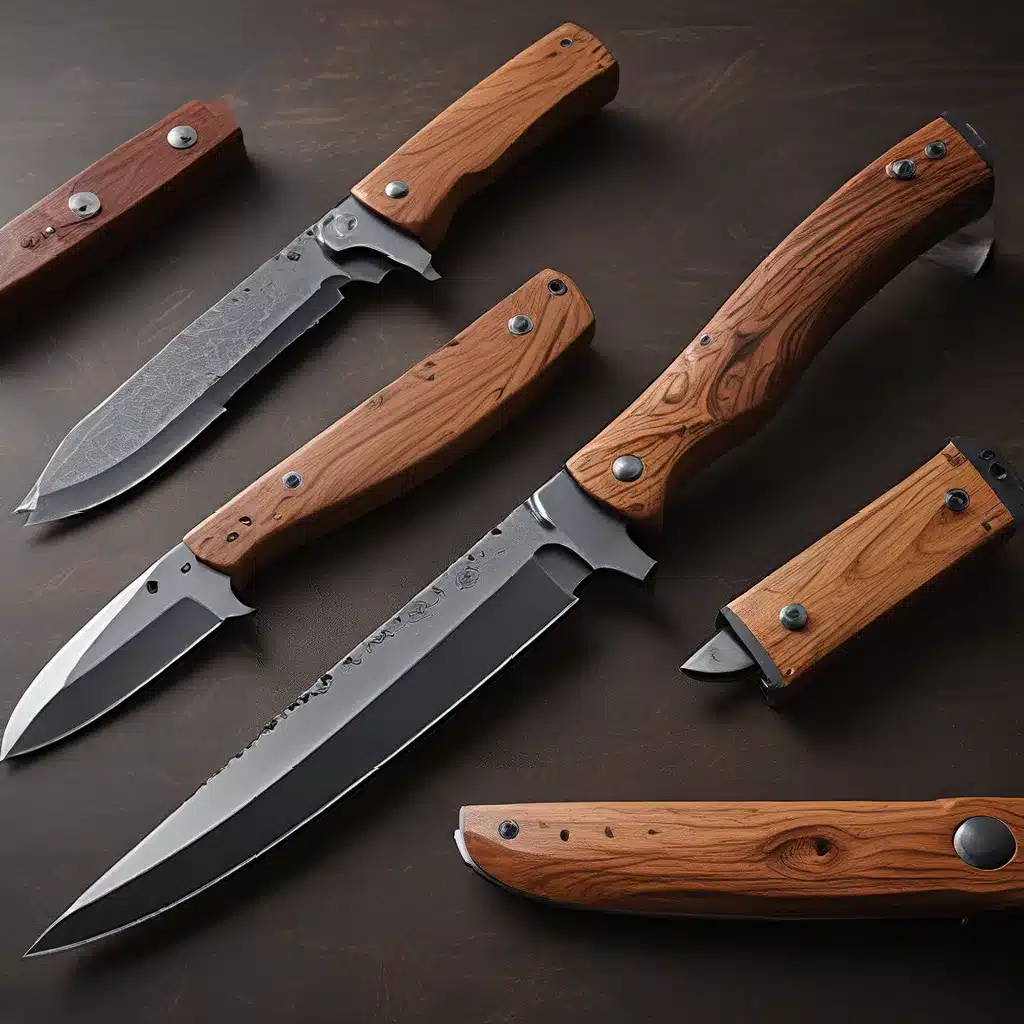
The Evolution of Knife Design: From Utilitarian Tools to Cultural Icons
As they say, “some designs are smart, some are beautiful, and some are instantly ingrained in our lives.” But the truly remarkable ones manage to combine all three – and knives are no exception. These everyday tools have undergone a fascinating transformation, evolving from purely functional implements to become works of art and symbols of culture.
I’ve always been captivated by the history of knife design and how certain innovations have left an indelible mark on the world. Growing up, I spent countless hours poring over catalogs and magazines, marveling at the latest cutting-edge (pun intended) designs. It was like watching the progression of human ingenuity unfold before my very eyes. And let me tell you, it’s been one wild ride.
One of the first game-changers that comes to mind is the Victorinox Swiss Army Knife. Introduced in 1897, this multi-tool marvel combined functionality and form in a way that was truly ahead of its time. The Swiss Officers and Sports Knife, as it was originally known, became a beloved companion for everyone from outdoor enthusiasts to NASA astronauts. Its iconic red body and suite of versatile tools made it an indispensable part of daily life for countless people around the world.
But the Swiss Army Knife is just the tip of the iceberg when it comes to groundbreaking knife designs. The Bic Cristal ballpoint pen, for example, revolutionized the way we write by offering an inexpensive, reliable, and disposable alternative to the finicky fountain pen. Introduced in 1950, this humble writing implement has become an icon in its own right, with over 100 billion units sold to date.
Reinventing the Cutting Edge: From Pocket Tools to Kitchen Essentials
Perhaps one of the most iconic knife designs of the modern era is the Chemex coffee maker. Invented in 1941 by Dr. Peter Schlumbohm, this hourglass-shaped pour-over brewer combined the aesthetics of Bauhaus design with the functionality of a laboratory beaker. With its wood-and-rawhide collar and elegant silhouette, the Chemex became a staple in kitchens and cafes around the world, transforming the humble act of making coffee into a ritualistic experience.
But it’s not just traditional knives and tools that have captured the public’s imagination. The Amazon Kindle, introduced in 2007, revolutionized the way we read by allowing us to carry entire libraries in the palm of our hand. With its sleek design and e-ink display, the Kindle opened up a new frontier in personal technology, paving the way for a wave of e-readers and digital reading platforms.
And let’s not forget the Swell water bottle, created in 2010 by entrepreneur Sarah Kauss. In a world increasingly dominated by single-use plastic, Swell offered a stylish and practical alternative, combining a fashionable design with high-performance insulation. By making reusable bottles cool and convenient, Swell has helped to drive a cultural shift towards more sustainable hydration habits.
Cutting-Edge Innovation: The Rise of Specialized Knife Designs
As someone who’s deeply passionate about knives, I’ve been fascinated to see how the industry has evolved over the years. One area that’s particularly captivated me is the rise of specialized knife designs for specific applications.
Take the Saarinen table, for example. Designed by Eero Saarinen in 1958, this iconic piece of furniture featured a curvilinear base that elegantly minimized the clutter of traditional table legs. In much the same way, the latest generation of kitchen knives have been engineered to excel at precisely defined tasks, from slicing paper-thin sashimi to effortlessly chopping through tough root vegetables.
One steel that’s been particularly exciting to follow is CPM-MagnaCut, a new innovation from Herman Knives. Developed by a team of passionate steel nerds, MagnaCut was designed to push the boundaries of what’s possible in a stainless knife steel, offering an unprecedented balance of edge retention, toughness, and corrosion resistance.
What’s really remarkable about MagnaCut is the way it was brought to life. The creator, a self-professed “knife steel nerd,” had spent years immersed in the history and metallurgy of cutting tools. Drawing on his deep well of knowledge, he was able to identify specific areas for improvement and painstakingly engineer a solution that addresses the shortcomings of previous stainless steels.
Pushing the Boundaries of Knife Design
The story of MagnaCut is a testament to the power of passion, perseverance, and a relentless pursuit of innovation. It’s a reminder that even the most humble of tools can be transformed into something truly remarkable when the right minds come together.
As I reflect on the incredible journey of knife design, I can’t help but wonder what the future has in store. Will we see even more specialized blades tailored to specific tasks? Will new materials and manufacturing techniques push the boundaries of what’s possible? And what other everyday objects might undergo a similar design evolution, going from utilitarian to iconic?
One thing’s for sure – the cutting edge of innovation is always moving, and I can’t wait to see what the next generation of knife designers and metallurgists will come up with. In the meantime, I’ll be busy exploring the latest and greatest offerings, always on the lookout for the next game-changing design that will reshape the way we think about these essential tools.
So whether you’re a seasoned chef, an outdoor adventurer, or simply someone who appreciates the art of craftsmanship, I encourage you to keep an eye on the ever-evolving world of knives. You never know when the next revolutionary design might come along and change the game forever.


